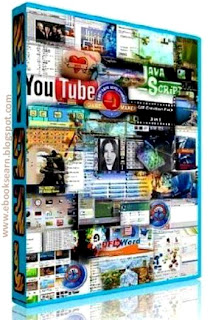The Rational Unified Process (RUP) is a software process that originally created by Rational Software, which was acquired by IBM in February 2003 developed. The product contains a hyperlink knowledge base with sample artifacts and detailed descriptions of many types of activities. RUP is included with the IBM Rational Method Composer (RMC) product which allows the adaptation of the method.
In 1997, acquired Rational Verdix, Objectory, Requisite, SQA, Performance Awareness and Pure Atria. The combination of the base of business experience led to the formulation of the six best practices in modern software engineering:
Develop iteratively, with the risk that the primary driver iterationManage RequirementsWith a component-based architectureType-visual softwareContinuously monitor the qualityControl changes
These best practices of both the Rational product development and were used out of the Rational field teams to help customers improve the quality and predictability of their software development. To this knowledge is accessible, Philippe Kruchten, Rational techrep one responsible for putting together a framework of explicit methods for modern software engineering. These efforts will be the mechanism of the delivery process Objectory developed HTML. The result is "Rational Unified Process (RUP) completed a tripod Strategic Rational:
An adaptable process that guided the developmentAutomated tools for applying this methodServices to accelerate the adoption of the two methods and tools.Devices outermost regions
RUP is based on a range of devices, or content elements, describing what must be produced, describes the skills and step by step explanations of how certain development goals are achieved. The major components or elements of content are:
Roles (WHO) - A role defines a set of skills, competencies and responsibilities.
Products of labor (this) - a work product represents something of a task, including all documents and models produced while working through the process.
Tasks (how) - A study describes a unit of work assigned, a role that provides a meaningful result.
Within each iteration, the tasks are divided into nine disciplines:
Six engineering disciplines:
Business ModelingRequirementsAnalysis and DesignImplementationTestDeployment
Three disciplines to support:
Configuration and Change ManagementProject ManagementEnvironment
Six Best Practices
Six of the best practices described in the Rational Unified Process is a software engineering paradigm that minimize lists six performances in the design of a software project to increase the productivity and defects. These practices are as follows:
Develop iteratively
It is better to know all the requirements in advance, but often this is not the case. Several software development processes by providing a solution how to do to minimize the cost in terms of stages of development.
Manage Requirements
Keep in mind the requirements set by users.
Use components
Breaking an advanced project is proposed not only inevitable but in fact. This promotes the ability to test individual components before they are integrated into a larger system. In addition, the reuse of code is a big plus and can be made easier by the use of object-oriented programming.
Visual model
Use diagrams to represent all key components, users, and their interaction. UML stands for Unified Modeling Language is a tool, is able to facilitate the task.
Check quality
Always test a significant portion of the project at any time. Test becomes more difficult as the project progresses, but must be constant for the entire production of software products.
Control changes
Many projects which can many teams that are sometimes created at different locations, use different platforms, etc. It is therefore important to ensure that changes are synchronized to a system and continuously monitored.
So, RUP is an important methodology for a Business Analyst to follow as one of his best practices.
The Author, Mr.David Madhu is a 10 years experienced Business Analyst for one of the top finance institution. Author has written many articles on Business Analysis and Business Analysis for various magazines.
Visit the author's website at Business Analyst for more information.
View the original article here


